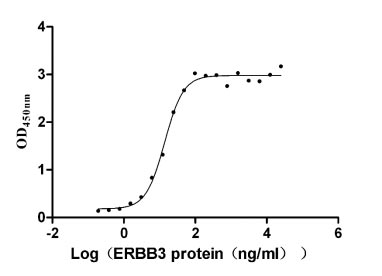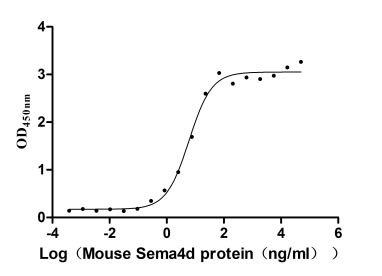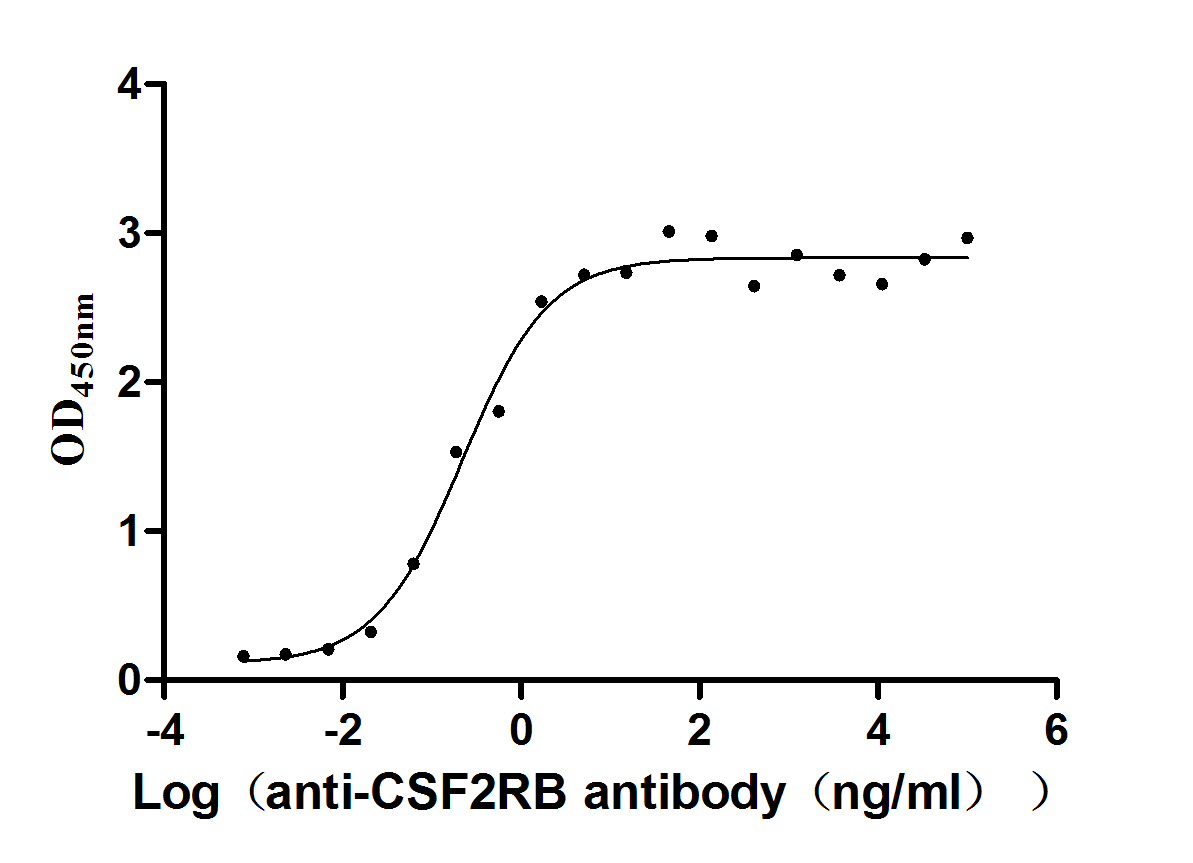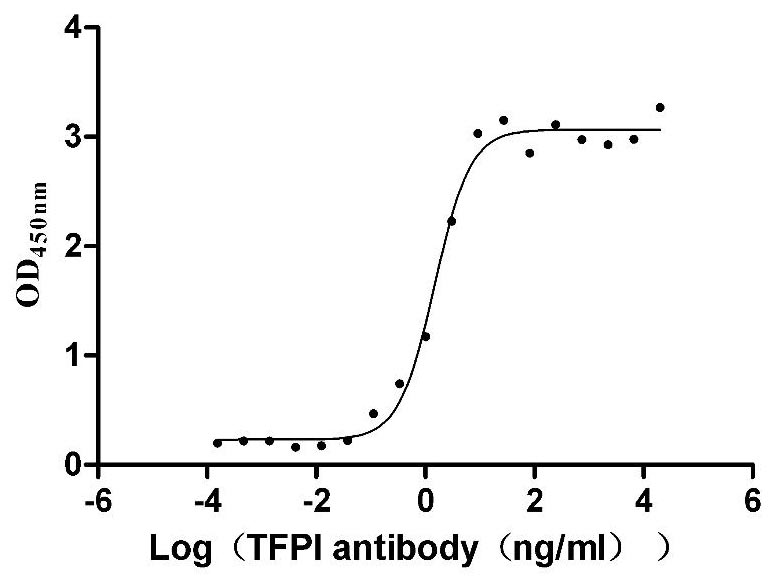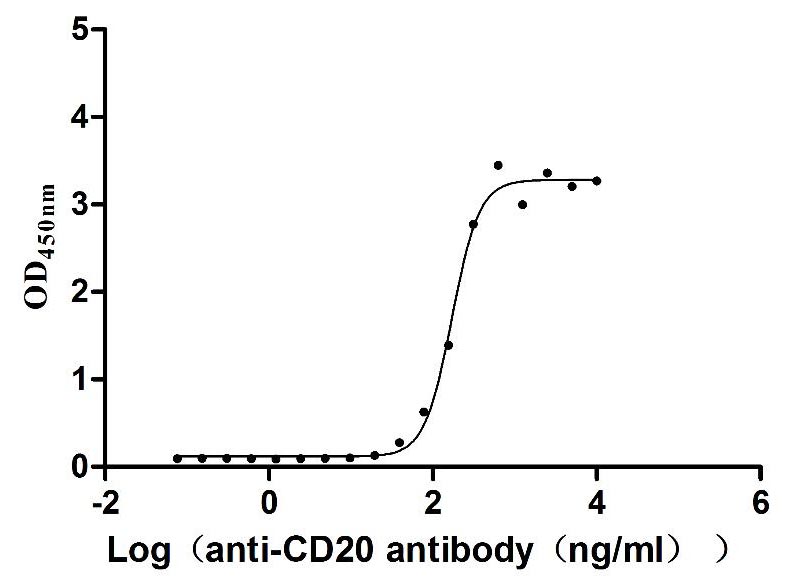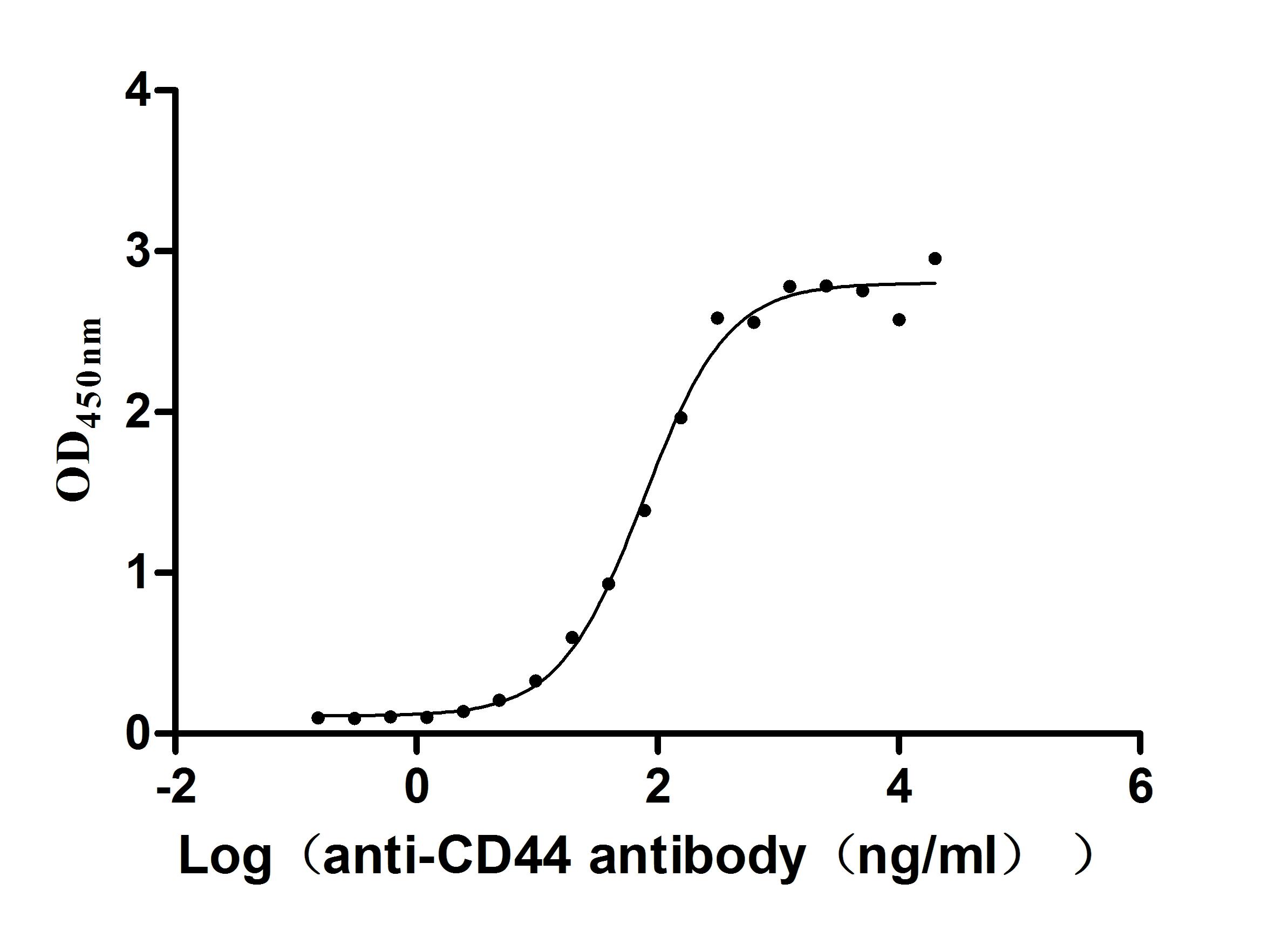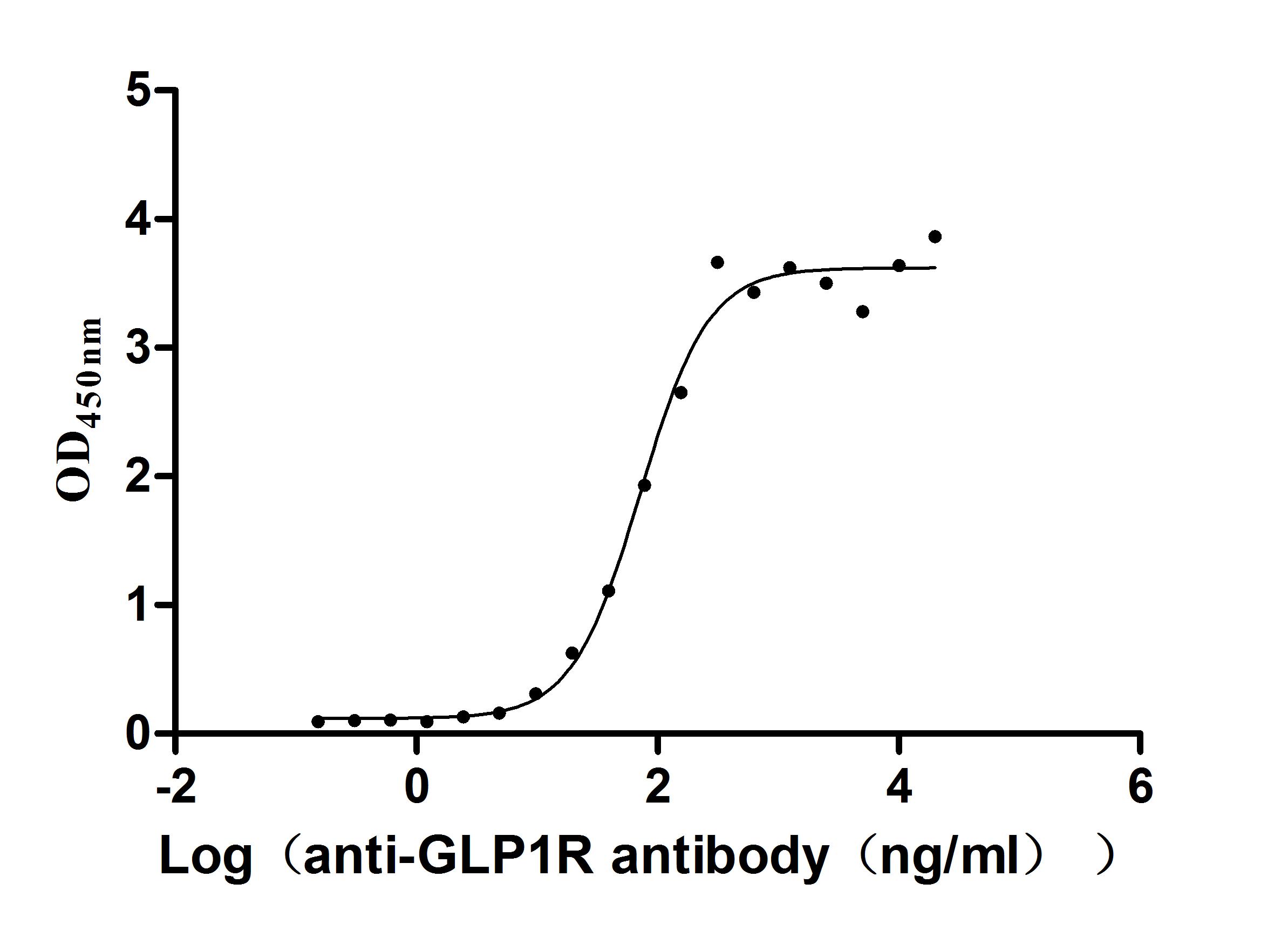Recombinant Mouse Transmembrane glycoprotein NMB (Gpnmb), partial
-
货号:CSB-YP860839MO
-
规格:
-
来源:Yeast
-
其他:
-
货号:CSB-EP860839MO
-
规格:
-
来源:E.coli
-
其他:
-
货号:CSB-EP860839MO-B
-
规格:
-
来源:E.coli
-
共轭:Avi-tag Biotinylated
E. coli biotin ligase (BirA) is highly specific in covalently attaching biotin to the 15 amino acid AviTag peptide. This recombinant protein was biotinylated in vivo by AviTag-BirA technology, which method is BriA catalyzes amide linkage between the biotin and the specific lysine of the AviTag.
-
其他:
-
货号:CSB-BP860839MO
-
规格:
-
来源:Baculovirus
-
其他:
-
货号:CSB-MP860839MO
-
规格:
-
来源:Mammalian cell
-
其他:
产品详情
-
纯度:>85% (SDS-PAGE)
-
基因名:
-
Uniprot No.:
-
别名:Gpnmb; Dchil; Hgfin; NmbTransmembrane glycoprotein NMB; DC-HIL; Dendritic cell-associated transmembrane protein; Osteoactivin
-
种属:Mus musculus (Mouse)
-
蛋白长度:Partial
-
蛋白标签:Tag type will be determined during the manufacturing process.
The tag type will be determined during production process. If you have specified tag type, please tell us and we will develop the specified tag preferentially. -
产品提供形式:Lyophilized powder
Note: We will preferentially ship the format that we have in stock, however, if you have any special requirement for the format, please remark your requirement when placing the order, we will prepare according to your demand. -
复溶:We recommend that this vial be briefly centrifuged prior to opening to bring the contents to the bottom. Please reconstitute protein in deionized sterile water to a concentration of 0.1-1.0 mg/mL.We recommend to add 5-50% of glycerol (final concentration) and aliquot for long-term storage at -20℃/-80℃. Our default final concentration of glycerol is 50%. Customers could use it as reference.
-
储存条件:Store at -20°C/-80°C upon receipt, aliquoting is necessary for mutiple use. Avoid repeated freeze-thaw cycles.
-
保质期:The shelf life is related to many factors, storage state, buffer ingredients, storage temperature and the stability of the protein itself.
Generally, the shelf life of liquid form is 6 months at -20°C/-80°C. The shelf life of lyophilized form is 12 months at -20°C/-80°C. -
货期:Delivery time may differ from different purchasing way or location, please kindly consult your local distributors for specific delivery time.Note: All of our proteins are default shipped with normal blue ice packs, if you request to ship with dry ice, please communicate with us in advance and extra fees will be charged.
-
注意事项:Repeated freezing and thawing is not recommended. Store working aliquots at 4°C for up to one week.
-
Datasheet :Please contact us to get it.
相关产品
靶点详情
-
功能:Could be a melanogenic enzyme.
-
基因功能参考文献:
- Osteoactivin is a negative regulator of osteoclastogenesis in vitro and in vivo and this process is regulated through CD44 and ERK activation. PMID: 27585719
- M2 macrophages express significantly greater levels of OA/GPNMB than pro-inflammatory M1 macrophages. PMID: 26442636
- This is the first experimental study to show that GPNMB adversely influences myocardial remodeling. PMID: 28148779
- findings indicate that GPNMB promotes glioma growth via Na(+)/K(+)-ATPase alpha subunits. Thus, the interaction between GPNMB and Na(+), K(+)-ATPase alpha subunits represents a novel therapeutic target for the treatment of brain glioblastomas. PMID: 27836549
- Finally, we identify glycoprotein NMB as a melanocytic marker up-regulated in Tsc2-null mouse uteri and human lymphangioleiomyomatosis samples PMID: 26880751
- Study identified the Na+/K+-ATPase alpha 1 and 3 subunits as receptors for the extracellular fragment of GPNMB that mediates activation of cellular signaling pathways and subsequent neuroprotective effects. PMID: 26988030
- Genetic modulators of IOP thus may be independently identified using the full array of BXD mice without concern for the presence of transillumination defect or mutations in Typr1 and/or Gpnmb. PMID: 27011731
- The GPNMB is a promising biomarker and therapeutic target for the development and progression of Nonalcoholic fatty liver disease in obesity. PMID: 26581806
- macrophages infiltrating injured mucosa express Gpnmb, Gpnmbpositive macrophages may ameliorate inflammation in the intestinal mucosa. PMID: 26458492
- The present study, using mice, is the first to demonstrate that GPNMB improves both spatial and non-spatial memory PMID: 25545823
- Gpnmb Is a Potential Marker for the Visceral Pathology in Niemann-Pick Type C Disease PMID: 26771826
- Gpnmb-positive macrophages infiltrate the liver during the recovery phase of CCl4-induced acute liver injury. PMID: 26599547
- that osteoactivin overexpression has an osteoinductive effect on bone mass in vivo and stimulates osteoprogenitor differentiation ex vivo PMID: 25899717
- GPNMB has protective effect against ischemia-reperfusion injury via phosphorylation of ERK1/2 and Akt PMID: 25010402
- Glycoprotein nonmetastatic melanoma protein B plays an important role in angiogenesis during hyperoxia injury PMID: 25054912
- DC-HIL is the critical mediator of melanoma cells' suppressor function PMID: 24936834
- Osteoactivin is a matricellular protein that stimulates osteoblast adhesion through binding to alphav beta1 integrin and cell surface heparan sulfated proteoglycans, resulting in increased cell spreading, actin reorganization, and osteoblast differentiation. PMID: 24415158
- our results suggest that OA is able to induce transdifferentiation of myoblasts into osteoblasts through increasing levels of phosphorylated FAK. PMID: 24265122
- Results indicate that the DC-HIL/syndecan-4 (SD-4) pathway regulates autoimmune responses by mediating the T cell suppressor function of myeloid-derived suppressor cells (MDSCs). PMID: 24516197
- GPNMB inhibits motor neuron death and plays a critical role in motor neuron survival. PMID: 22891158
- SD-4, as the T-cell ligand of DC-HIL, is a potent inhibitor of allo-reactive T cells responsible for GVHD and a potentially useful target for treating this disease. PMID: 23113638
- Osteoclast-derived osteoactivin is a novel stimulator of osteoclast activity and bone resorption. PMID: 22536365
- R150X mutation in Gpnmb dramatically modified its list of genetic covariates, which may explain the associated ocular pathology. PMID: 21398278
- GPNMB influences the chemical composition of melanosomes. PMID: 21029394
- OA plays an important role in bone formation and serves as a positive regulator of fracture healing PMID: 20506259
- Gpnmb is a novel prorepair gene that is necessary for crosstalk between the macroautophagic degradation pathway and phagocytosis. PMID: 20709912
- ADAM10 as a sheddase capable of releasing the GPNMB/OA ectodomain from the surface of breast cancer cells PMID: 20711474
- DC-HIL/Gpnmb confers upon melanoma the ability to downregulate the activation of melanoma-reactive T cells, thereby allowing melanoma to evade immunologic recognition and destruction. PMID: 20570888
- mRNA of this gene is linked to the developing retinal pigment epithelium and iris in the embryo PMID: 12638126
- OA is expressed in late mouse embryonic development in the nervous system, basal layer of the skin, germinal cells of hair follicles, and in the forming nephrons of the kidney PMID: 14696968
- osteoactivin might function as an activator for fibroblasts infiltrated into denervated skeletal muscles and play an important role in regulating degeneration/regeneration of extracellular matrix PMID: 16100390
- Endogenous DC-HIL is a negative regulator of T lymphocyte activation PMID: 17284525
- GPNMB acts as a negative regulator of macrophage inflammatory responses. PMID: 17475886
- the role of Gpnmb in mechanisms involved in the subsequent IOP elevation and optic nerve degeneration remain unclear PMID: 17608931
- Syndecan-4 is the T cell ligand through which DC-HIL mediates its negative coregulatory function PMID: 17947650
- These results suggest that the extracellular fragments of osteoactivin produced by shedding act as a growth factor to induce MMP-3 expression via the ERK pathway in fibroblasts. PMID: 18036345
- Both OA-D and OA-E peptides significantly induced osteoblast differentiation in vitro and that effect is RGD independent. PMID: 18049427
- The inclusion of gpnmb in the MITF regulon suggests a role for GPNMB in mature osteoclast function. PMID: 18313864
- These findings indicate that osteoactivin is a novel osteoclastic protein and plays a role in osteoclast differentiation and/or activity. PMID: 18381073
- affects of Gpnmb on innate immunity influence susceptibility to glaucoma in DBA/2J mice PMID: 18402690
- Osteoactivin acts as a positive regulator of osteoblastogenesis. PMID: 18555216
- Gpnmb expression can be used as a marker for analyzing melanocyte development and disease progression. PMID: 18983539
- Gpnmb is a melanosome-associated glycoprotein that contributes to the adhesion of melanocytes with keratinocytes. PMID: 19320736
- Our findings support a dual role for DC-HIL: inhibition of adaptive immunity following ligation of syndecan-4 on activated T cells and induction of innate immunity against dermatophytic fungi. PMID: 19794069
显示更多
收起更多
-
相关疾病:May promote bone metastatic phenotype when overexpressed in breast cancer cells.
-
亚细胞定位:Cell membrane; Single-pass type I membrane protein. Melanosome membrane; Single-pass type I membrane protein. Early endosome membrane; Single-pass type I membrane protein.
-
蛋白家族:PMEL/NMB family
-
组织特异性:May be up-regulated in bone metastatic breast cancer cells.
-
数据库链接:
KEGG: mmu:93695
STRING: 10090.ENSMUSP00000031840
UniGene: Mm.302602
Most popular with customers
-
Recombinant Human Receptor tyrosine-protein kinase erbB-3 (ERBB3), partial (Active)
Express system: Mammalian cell
Species: Homo sapiens (Human)
-
Recombinant Mouse Semaphorin-4D (Sema4d), partial (Active)
Express system: Mammalian cell
Species: Mus musculus (Mouse)
-
Recombinant Human Cytokine receptor common subunit beta (CSF2RB), partial (Active)
Express system: Mammalian cell
Species: Homo sapiens (Human)
-
Recombinant Human R-spondin-1 (RSPO1), partial (Active)
Express system: Mammalian cell
Species: Homo sapiens (Human)
-
Recombinant Human Tissue factor pathway inhibitor (TFPI), partial (Active)
Express system: Mammalian cell
Species: Homo sapiens (Human)
-
Recombinant Dog B-lymphocyte antigen CD20 (MS4A1)-VLPs (Active)
Express system: Mammalian cell
Species: Canis lupus familiaris (Dog) (Canis familiaris)
-
Recombinant Macaca fascicularis CD44 antigen (CD44), partial (Active)
Express system: Mammalian cell
Species: Macaca fascicularis (Crab-eating macaque) (Cynomolgus monkey)
-
Recombinant Human Glucagon-like peptide 1 receptor (GLP1R), partial (Active)
Express system: Mammalian cell
Species: Homo sapiens (Human)


